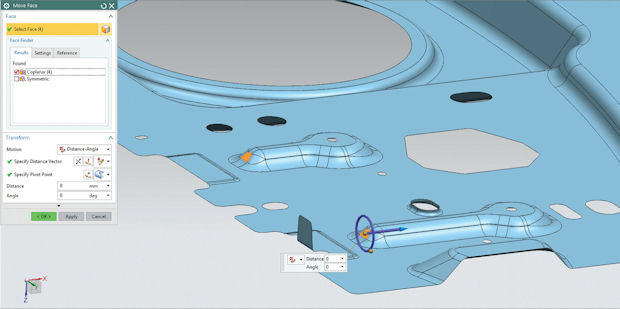
Latest News
March 21, 2016
For nearly two decades, the major CAD vendors have operated under an “every man for himself,” motto, justifying their promotion of proprietary formats and 3D modeling standards as best for performance for their individual toolsets. Every once in a while, the vendors would make an attempt to play nice with the competition, but their efforts never really went far enough to appease customers’ frustration over incompatible CAD formats.
Because of this standoff, dealing with multiple CAD formats has been a long-standing pain point for engineering organizations, many of which have doled out millions of dollars and devoted thousands of man hours to getting 3D models to a place where they could be easily shared for design collaboration. While the costs vary between organizations, industry sectors like automotive and aerospace spend heavily each year on 3D model exchange, including data migration software and the labor expenses associated with manual data re-entry.
 The push-pull editing in direct modeling programs, such as Siemens PLM Software’s NX and Solid Edge with Synchronous Technology, helps manufacturers cope with imported geometry because you can edit geometric features without parametric histories. Images courtesy of Siemens.
The push-pull editing in direct modeling programs, such as Siemens PLM Software’s NX and Solid Edge with Synchronous Technology, helps manufacturers cope with imported geometry because you can edit geometric features without parametric histories. Images courtesy of Siemens.To be sure, there are myriad tools and data format standards — such as STEP, IGES and JT Open — that have been rolled out to help alleviate some of the pain points. Still, 3D CAD data exchange remains a thorny problem, perhaps even more so today because of an increasingly heterogeneous CAD landscape. While CAD users and engineering organizations have been crying foul for years, their complaints never seem to be loud enough to push the CAD vendor community to take more decisive action — that is until now.
New Agreement a Turning Point?
Autodesk and Siemens PLM Software recently inked a new interoperability agreement that could be a sign that things may finally change. The agreement calls for both companies to share toolkit technology and do regular application exchanges so they can build future products that will be interoperable. They aren’t just talking about CAD, either. The idea is to infuse interoperability across a range of products between the two software leaders, including CAD, high-end visualization applications and PLM (product lifecycle management), said Stefan Jockusch, Siemens PLM Software’s vice president of Strategy.
Jockusch acknowledged that this isn’t Siemens’ first time to the interoperability rodeo. The company has made a mark fostering industry-wide support for its JT Open format, but he said that standard is designed as a lightweight format for collaboration, thus doesn’t fully address the scope of interoperability needs. “A lot of interoperability efforts have existed before this agreement, but the big step this takes is to make integration easier,” he explains. “We envision creating built-in integrations in a more native, integrated way.”
The upside for customers could be a big one. According to Jockusch, the goal is to make it more cost effective for users to exchange data. “It should be less error prone and problematic — the problem you always have when trying to import or export file formats,” he says.
Let’s give a round of applause to Autodesk and Siemens. How do we know that things will be different this time around? We don’t, necessarily, but the landscape has shifted enough so that 3D model interoperability is something few vendors — or engineering organizations, for that matter — can choose to ignore.
Interest in Interoperability
Few companies, even the big automotive and aerospace behemoths, have any one standard CAD offering in place any more. Thanks to a flurry of mergers and acquisitions and an increasingly global design chain, most shops have many flavors of CAD, simulation and PLM tools in house. It’s just a fact of life. Moreover, products are far more complex today, requiring a lot more software besides CAD for design and far more reliance on integrated workflows between cross-functional engineering domains. Couple that with this idea of an open ecosystem of apps, driven by the cloud and consumer computing, and there’s no longer any room for application silos, let alone 3D file incompatibilities.
Jockusch acknowledges the dramatic changes and says Siemens’ vision for openness and interoperability is critical to the firm, now and moving forward.
“More integrated solutions are being proposed, development processes are coming together, and the need for an open ecosystem of apps has become more visible,” he says. Besides the latest deal with Autodesk, he says Siemens will continue to work on interoperability with the other vendors in all of its software segments, including MES (manufacturing execution systems) and ALM (application lifecycle management). “You can’t expect that a customer will replace a certain application they are benefiting from so they can better integrate the application you’re pushing, he says. “It’s easier for us to grow if we are open.”
As companies move more of their enterprise systems and critical intellectual property to the cloud, they will expect the same interoperability and openness from all of their systems — including on-premise CAD and design tools. This time around, I don’t think Siemens and Autodesk — or any of the CAD vendors — can afford to pay lip service to interoperability.
Subscribe to our FREE magazine, FREE email newsletters or both!
Latest News
About the Author
Beth Stackpole is a contributing editor to Digital Engineering. Send e-mail about this article to [email protected].
Follow DE





